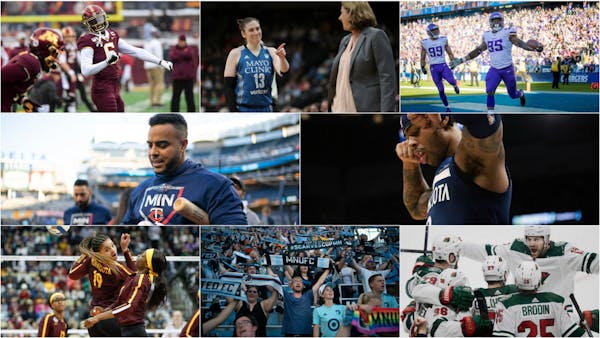With the Gophers trying to stem the financial fallout from the coronavirus pandemic, athletic director Mark Coyle acknowledged Friday that the school might eventually need to cut sports.
"No doubt, everything is on the table," Coyle said in a video news conference following his presentation to the Board of Regents.
Coyle lauded how successful teams have been throughout the department, but noted two facts: Minnesota has the eighth-biggest budget in the Big Ten, at $123 million, yet supports 25 sports programs, fourth most in the conference.
"I would argue we have maximized our revenue better than most across the country," Coyle said. "So obviously we're going to have to look at that."
In their presentation to the regents, Coyle and Rhonda McFarland, the chief financial officer for the athletic department, noted that it was headed for a $1 million surplus in February but wound up with a $4 million loss through April.
Last month, the athletic department laid out three scenarios. The Gophers would lose $10 million even if sports return to normal this fall. That number would reach $30 million if sports are played without fans this fall and $75 million if college sports aren't played before January.
The department is already working toward a "double-digit" percent reduction in each sport's budget, encouraging regional travel for nonconference play and other travel savings.
"We're not alone in this situation," McFarland said. "There are only a handful of athletic departments that could manage a $30 million loss. And likely very few that would survive a $75 million reduction in revenue. That is the nature of the national landscape at this time."
The longer the university goes without athletics, the larger the financial strain. But there isn't a consensus of when the campus, let alone sports, will return to normal.
University leaders and the Board of Regents have yet to make a decision on what the fall semester will look like, namely if students will be back on campus or still taking classes online at home as they are now.
Two contingency budget plans floated at a Thursday meeting considered a return to campus in mid-fall or not until January, depending on what the situation is like on July 1 for the first plan and Aug. 14 for the second plan. The board next meets June 11-12, which could be when a decision is made on the date the campus reopens.
Other college leaders, such as Ohio State athletic director Gene Smith and Big East Commissioner Val Ackerman, have said they can't envision college athletics resuming if the general student body is still restricted to online classes. Coyle said data will have to drive the Gophers' decisions on that front.
"We are going to follow campus' lead and work closely with President [Joan] Gabel … on when we can bring our student-athletes back," he said.
Coyle also addressed the possibility of playing sports without fans in the stands, saying early on, many people were open to that concept. Now, though, he said more are "pausing" on that idea.
If the Gophers can't sell tickets to football, the big revenue-generating sport, or if they can't even garner money from television broadcast deals, the effect on the athletic department would be severe.
On Friday, regent Richard Beeson floated the idea of a bridge loan for Gophers sports, noting the impact those teams have on the university's brand.
"They have the risk of suffering more than any unit around the university," Beeson said. "Like a lot of businesses right now, they need a bridge. They need support in nontraditional ways. I have foreseen that we may need to provide that bridge to provide the time that athletics needs to get this thing sorted out.
"… This is a business that we've been in for 140 years. And we'll be in the business for a long time going forward."






